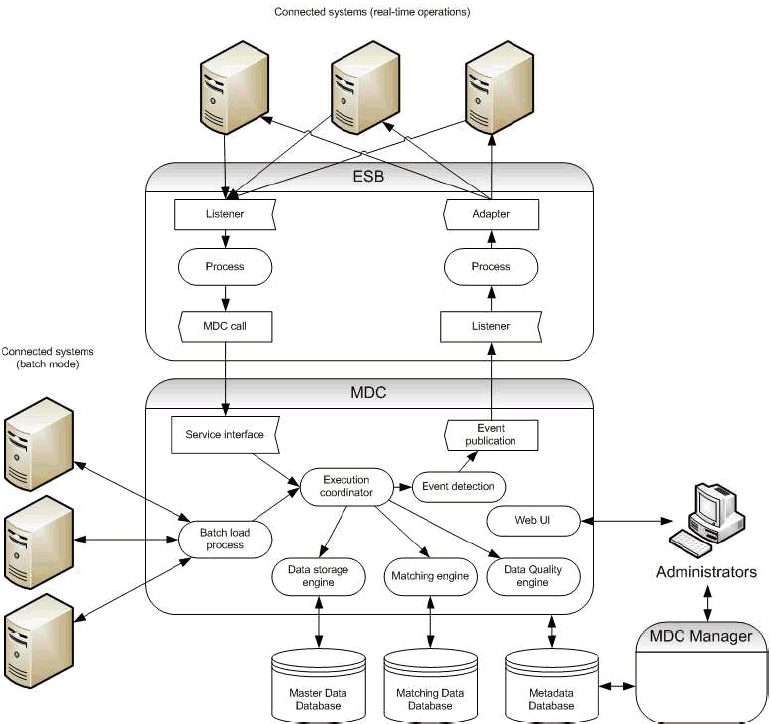
iWay Master Data Server (MDS) is designed for simple integration with most Enterprise Service Bus (ESB) middleware through web services, messaging queues, or specific plugins. In addition to these real-time interfaces, iWay MDS can schedule and execute batch operations on its own to perform tasks that involve a lot of data (such as initial loads) or accessing systems that do not allow online change processing. The following diagram illustrates the components and their interactions.

The diagram shows three major components:
The primary role of ESB is detecting events inside the source systems, feeding them to MDS in the expected structure, and executing the processes involved in updating the source systems. The update processes include direct updates in the systems, emails being sent to the appropriate contacts, or arbitrarily-complex workflows. It is also possible to configure the communication between iWay MDS and a particular system. However, usage of ESB is highly recommended because of the transparency, quality of service features, extensibility, and scalability.
MDS Manager is a user interface application used by administrators to configure most of the parameters of the MDS engine.
MDS runtime itself consists of several tightly connected components that ensure data consistency and timeliness. There are two interfaces that are used to obtain the data:
The batch process executor is used primarily for high-volume data loads, while the service interface is most efficient for real-time transactional data. Both input interfaces submit the obtained data to the execution coordinator, which creates an execution plan to consolidate the data and then executes it. As a part of this consolidation, the data undergoes data cleansing, standardization, enrichment, and other data quality processes. iWay MDS uses the industry proven iWay Data Quality Server (DQC) engine for data quality operations, matching and merging.
The iWay DQC engine is already integrated with iWay MDS, therefore, there are no other component installations that are required. Once the data has been consolidated, the system detects any changes in the master data, as well as the instance records that differ from the actual data in the connected systems. This information is passed to an event publisher that assembles the change messages and sends them to the ESB to be executed. Another way of exporting changed data to connected systems is the use of batch interfaces that allow for full export of the data or differential export since the specified point in time.
| iWay Software |